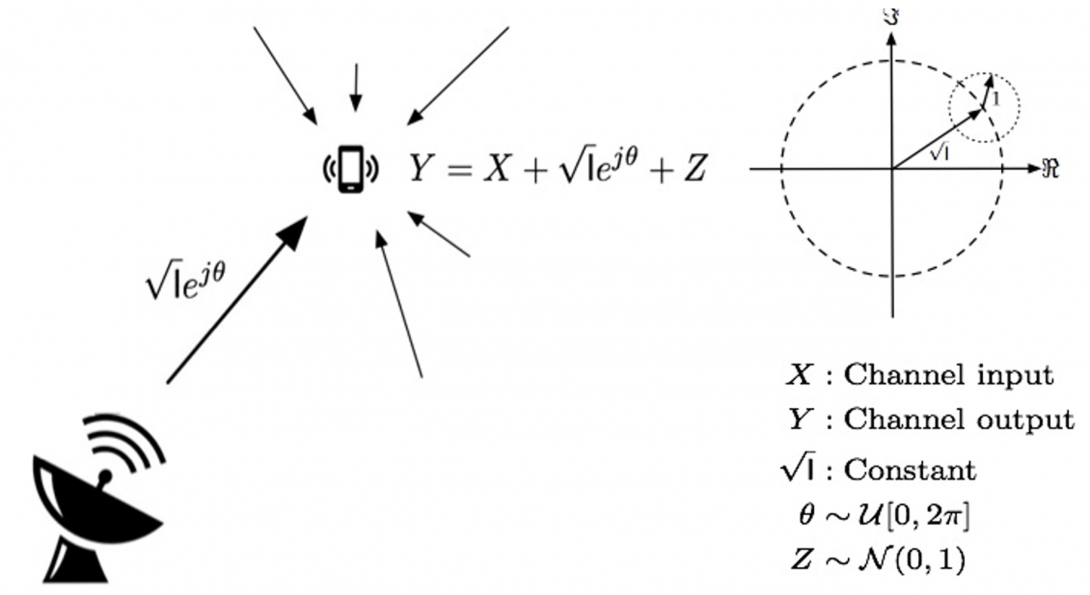On the Capacity of the AWGN Channel with Additive Radar Interference

1
Sponsors:
Problem Statement and Motivation
- Shortage of spectrum resources, specially with the ever increasing demand for commercial services, necessitates a more sensible bandwidth allocation policy.
- Portions of radar-only spectrum is now open for commercial wireless services hence the radar and communication systems have to share the spectrum with one another.
- We investigate the problem from the communication system perspective and seek to find the capacity of a communications channel that, in addition to additive white Gaussian noise, also suffers the interference from a co-existing radar transmission.
- We find the structural properties of capacity achieving input distribution.
Technical Approach
- We take an information theoretic approach to find the capacity of a communication system in presence of radar interference.
- We model the radar interference as an additive term whose amplitude is known and constant, but whose phase is uniformly i.i.d at each channel use.
- We find the structure of the capacity achieving input distribution, under the average power constraint.
- We find the capacity achieving input for the large interference to noise ratios.
Key Achievements and Future Goals
- S. Shahi, D. Tuninetti, N. Devroye, “On the Capacity of the AWGN Channel with Additive Radar Interference ,’’ Allerton 2016.
- Future goals:
- Extensions to MIMO/OFDM channels.
- Finding the location and probabilities of the mass points of the optimal input.



